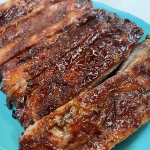Just like the weeds in our front yard, the Longleaf Pine is known for thriving in sandy environments. But how much do you know about the Land of the Pines? Here are some things to help branch out your topics on your next hot girl walk:

- They start as a grower, not a shower. Baby LL pines can live as smol grass piles for years while growing a taproot. Then the “candle” growth bud in the middle of the grass pile shoots up, and it becomes a tree.
- They got junk in their trunk. They look like they’re just growing tall enough to fall on the nearest power line, but wait … there’s more. That taproot? It can be 12 feet long at maturity.
- Their bottom branches can be dead weight. These tall bois need sunlight to flourish, and bottom branches may sacrifice themselves to benefit the rest of the tree. In most cases, the tree is still OK.
- They thrive in fire. Lightning used to do the job, but now park rangers do controlled burns — they prevent large forest fires, but they also clear out underbrush and old needles, making space for new trees and small species. The tiny Venus fly trap? It’s native to longleaf forests.
- The needles are … nutritious? Apparently high in vitamin C, they can be brewed to make tea or syrup. We once sipped a limited edition Reverie Cocktail with pine-needle-infused vodka. Expect notes of citrus.
- The sap might be everywhere, but there’s hope. To remove deposits from your car, try WD-40. For your animals, maybe a less intense approach — try peanut butter, oil or vodka.
Bonus: That pine you’re looking at might not be a longleaf. Here’s more than you ever wanted to know on how to tell.




